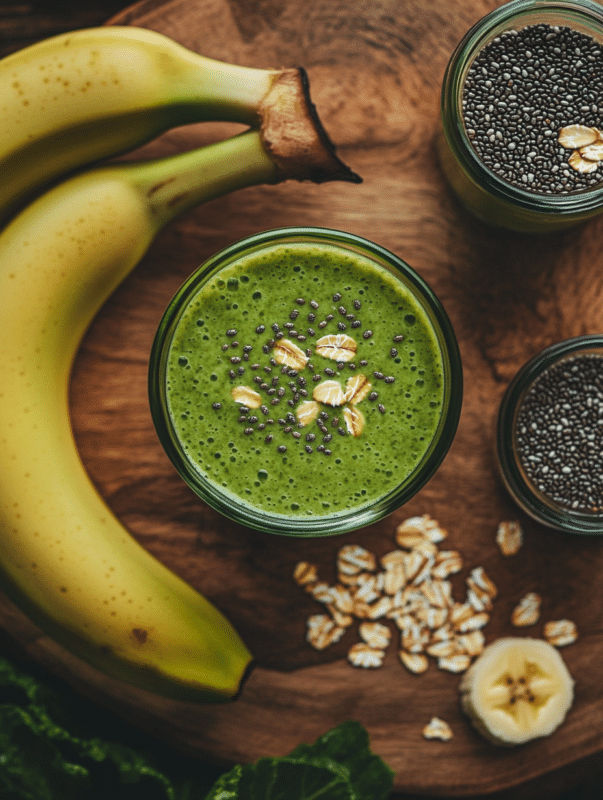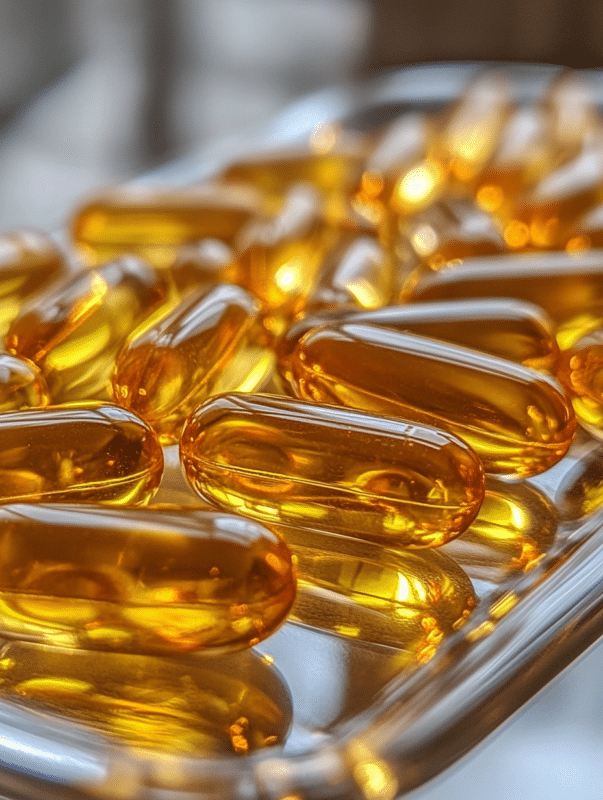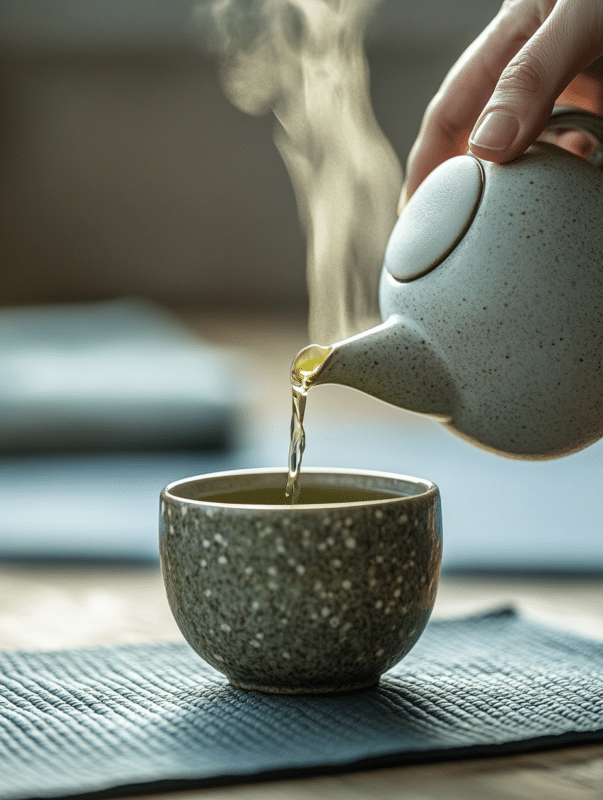Let’s be real—between the hype around Ozempic and the buzz surrounding Zepbound, everyone’s suddenly talking about GLP-1. But what exactly is it, and why is it getting so much attention?
GLP-1 (short for glucagon-like peptide-1) is more than just a trending hormone—it’s a natural game-changer for anyone trying to manage weight, control blood sugar, or simply feel more in balance. It tells your body, “Hey, you’re full,” helps release insulin, and slows digestion in the best possible way.
Here’s the exciting part: you don’t need a prescription to tap into its power. While medications can mimic GLP-1, your body already has the tools to activate it—you just need to know how to flip the switch.
In this article, we’re breaking down what GLP-1 really does, why it’s so important for your metabolic health, and most importantly: how to boost your own GLP-1 naturally using smart food choices, targeted supplements, and small lifestyle tweaks that go a long way.
If you’re looking for real strategies—not gimmicks—this is for you.
What Is GLP-1 and Why It Matters
The Role of GLP-1 in Your Body
GLP-1 (Glucagon-Like Peptide-1) is a hormone released in the gut when you eat—especially when your meal contains fat or carbohydrates. Think of it as your body’s natural coach: it slows down how fast your stomach empties, increases insulin release (which lowers blood sugar), and tells your brain you’re full. This trio of benefits makes GLP-1 essential for regulating hunger, managing blood glucose, and supporting healthy weight.
In other words, when GLP-1 is doing its job, you’re less likely to overeat, snack mindlessly, or experience energy crashes.
Why It’s a Big Deal (Especially Now)
Here’s why GLP-1 is getting major attention: recent drugs like Ozempic and Zepbound are synthetic GLP-1 receptor agonists. That means they mimic GLP-1’s effects to help people with obesity or type 2 diabetes lose weight and stabilize blood sugar.
But the reality is, your body can naturally boost GLP-1, and doing it without medication avoids the potential side effects like nausea, digestive issues, or long-term dependency.
The bottom line? GLP-1 isn’t just for people with diabetes. If you’re trying to support metabolism, balance blood sugar, reduce cravings, or manage your weight—this hormone should absolutely be on your radar.
Discover how food plays a key role in this process in our in-depth guide: Optimizing Zepbound Effectiveness with Food
How Can I Increase My GLP-1 Levels Naturally?
Eat More Fiber—Especially Soluble and Fermentable Types

Fiber is your gut’s best friend—and GLP-1’s secret weapon. Soluble fiber, found in foods like oats, apples, lentils, and chia seeds, helps slow digestion and promotes the release of GLP-1. But even better? Fermentable fibers like inulin or resistant starch (from cooked-then-cooled potatoes or green bananas) feed gut bacteria that directly stimulate GLP-1 secretion.
Adding a simple lentil salad or a spoonful of chia pudding to your daily routine can quietly but powerfully improve your body’s GLP-1 production.
Check out this recipe collection designed to support your goals: Natural Zepbound Recipes
Combine Healthy Fats and Lean Proteins
Meals rich in protein and good fats stimulate GLP-1 naturally. Eggs, Greek yogurt, fatty fish like salmon, avocados, and extra virgin olive oil don’t just nourish you—they tell your body, “We’re satisfied.”
The trick? Combine them. A salad with salmon and avocado or a boiled egg with olive oil-drizzled veggies will enhance satiety and stimulate a strong GLP-1 response.
Feed Your Gut—The Microbiome Matters
Your gut bacteria are actually part of the GLP-1 team. When you nourish them with prebiotics (fiber-rich foods) and probiotics (like kefir, kimchi, or sauerkraut), they release short-chain fatty acids like butyrate—chemical messengers that help ramp up GLP-1.
A balanced microbiome = stronger GLP-1 signaling.
Don’t miss our post on foods to choose and avoid if you’re following a GLP-1 protocol like Zepbound: What to Eat and Avoid on Zepbound
What Supplements Increase GLP-1 Levels?
Berberine: A Natural GLP-1 Booster with Science Behind It

Berberine is a compound found in several plants like Berberis and goldenseal. It’s long been used in traditional medicine, but now science is backing it too—especially when it comes to metabolic support.
A study published in the National Library of Medicine showed that berberine enhances GLP-1 secretion and improves insulin sensitivity, making it a natural ally in blood sugar control.
External Study:
Berberine promotes GLP-1 secretion – PubMed
Curcumin: Anti-Inflammatory and Gut-Supporting
The active compound in turmeric, curcumin, can indirectly support GLP-1 by reducing inflammation and improving gut health. A healthier gut means better hormone signaling—including GLP-1. Look for curcumin with black pepper extract (piperine) for better absorption.
Magnesium and Omega-3s: Metabolic Support Duo
Magnesium plays a quiet but critical role in glucose metabolism and insulin function, both of which influence GLP-1 levels. Foods like almonds, spinach, and black beans are rich sources—or you can opt for a high-quality supplement.
Omega-3 fatty acids (from fish oil or algae) are anti-inflammatory, but they also help nurture your gut lining and microbial balance, which supports GLP-1 release naturally.
Resistant Starch and Inulin: Feed the Right Bacteria
Prebiotic fibers like inulin (found in chicory root and artichokes) and resistant starches act as fuel for your gut bacteria. These bacteria, in turn, produce compounds that enhance GLP-1 secretion.
Try simple swaps like eating cooked-and-cooled rice, adding a teaspoon of green banana flour to smoothies, or including garlic and onions in meals.
Is There a Natural Alternative to GLP-1 Medications Like Ozempic or Zepbound?
Whole Foods That Mimic GLP-1 Effects

While GLP-1 medications like Ozempic and Zepbound work by activating GLP-1 receptors in the body, certain foods can gently do the same—without synthetic compounds.
- Bitter melon contains bioactive compounds that function similarly to GLP-1 mimetics.
- Green tea is rich in catechins, which support insulin sensitivity and modestly stimulate GLP-1.
- Cinnamon not only improves glucose metabolism but may also support GLP-1 secretion.
These natural options aren’t as potent as injections—but when used consistently with diet and movement, they can reinforce your body’s own GLP-1 pathways.
Check out this roundup of natural ideas you can include in your meals: Natural Zepbound Recipes
Exercise & Intermittent Fasting: Your Hormonal Reset Tools
Physical activity, especially moderate cardio (like brisk walking, cycling, or swimming), significantly increases GLP-1 release post-exercise. Likewise, intermittent fasting—such as eating only within an 8-hour window—has been shown to trigger hormonal improvements, including enhanced GLP-1 activity.
Scientific Evidence:
Exercise and fasting increase GLP-1 secretion – NIH
These lifestyle shifts not only help you naturally raise GLP-1, but also reduce your body’s resistance to it.
Sleep, Stress & Mindful Eating Matter More Than You Think
High cortisol levels from stress blunt GLP-1 responses. Prioritizing 7–8 hours of restful sleep and practicing mindful eating—slowing down, chewing fully, minimizing distractions—can improve satiety signals and enhance hormone function.
Don’t miss our tips for what to combine or avoid to get the best results from GLP-1 boosting habits: What to Eat and Avoid on Zepbound
FAQs
You can increase GLP-1 levels by eating high-fiber foods, including fermented and prebiotic-rich ingredients, consuming healthy fats and lean proteins, exercising regularly, sleeping well, and reducing stress.
op natural supplements include berberine, curcumin, magnesium, omega-3 fatty acids, and prebiotic fibers like inulin or resistant starch. These support metabolic health and stimulate GLP-1 release.
“Ozempic hormone” refers to GLP-1. To raise it naturally, focus on fiber-rich meals, fermented foods, exercise, intermittent fasting, and gut-friendly supplements like berberine and curcumin.
Yes. Foods like bitter melon, green tea, and cinnamon act as mild GLP-1 mimetics. Along with healthy habits, they help regulate blood sugar and appetite—without pharmaceuticals.
Conclusion
You don’t have to rely solely on medications like Ozempic or Zepbound to benefit from the power of GLP-1. With the right mix of real food, smart habits, and supportive nutrients, your body can naturally increase this powerful hormone on its own.
GLP-1 is more than a trend—it’s a key to long-term health, balance, and sustainable wellness.
Looking for inspiration? Try this curated guide of easy-to-make recipes that support your GLP-1 goals:
Natural Zepbound Recipes

2 thoughts on “Understanding GLP-1 and Natural Ways to Enhance Its Levels”